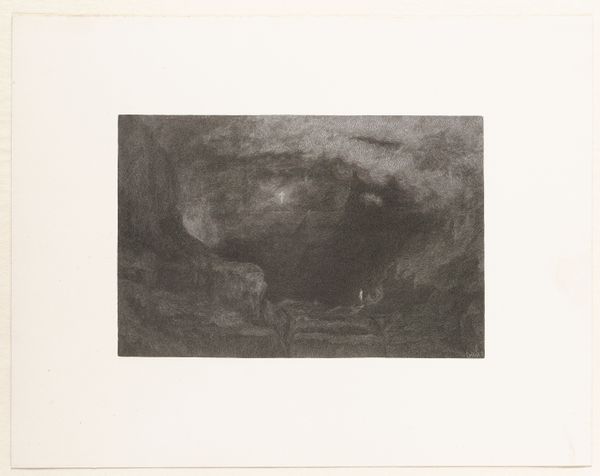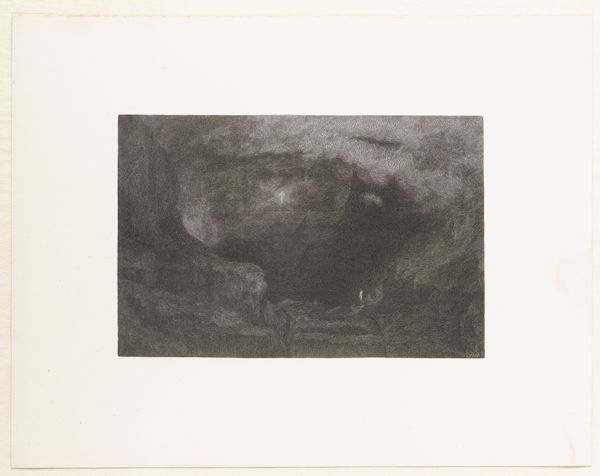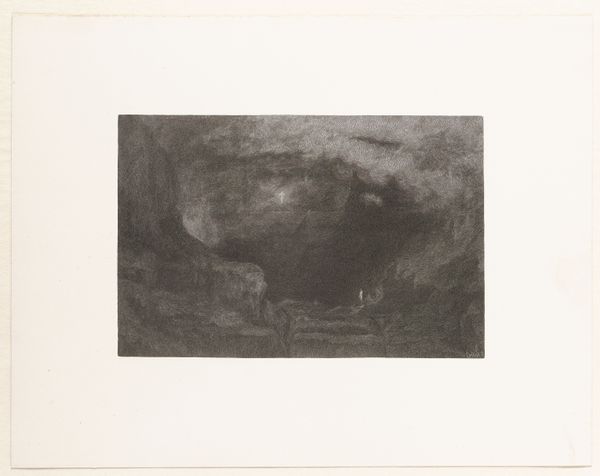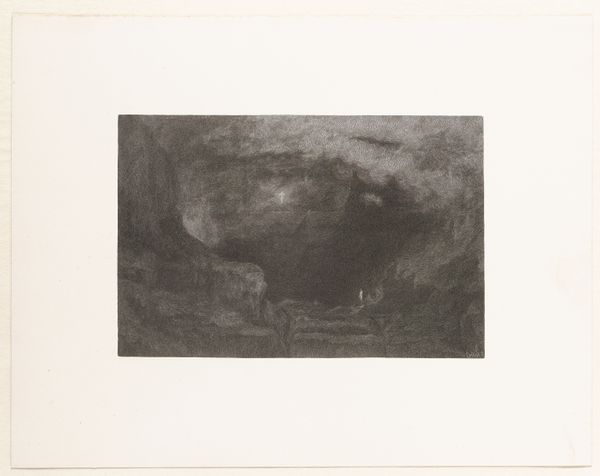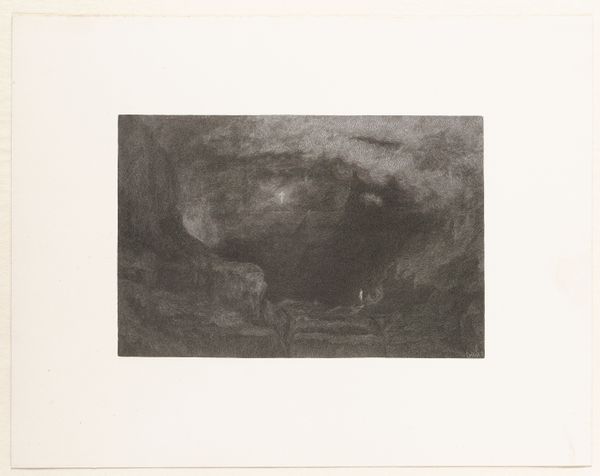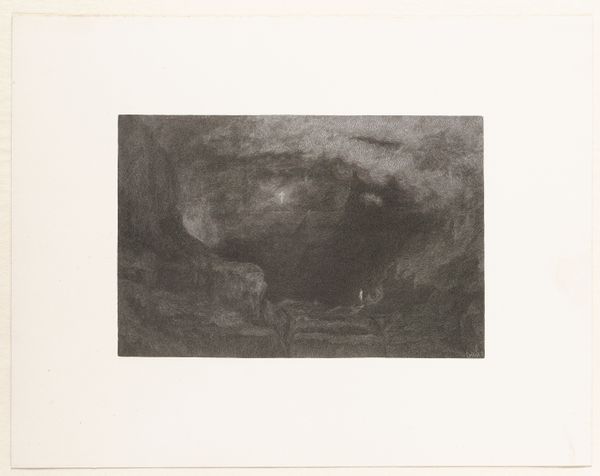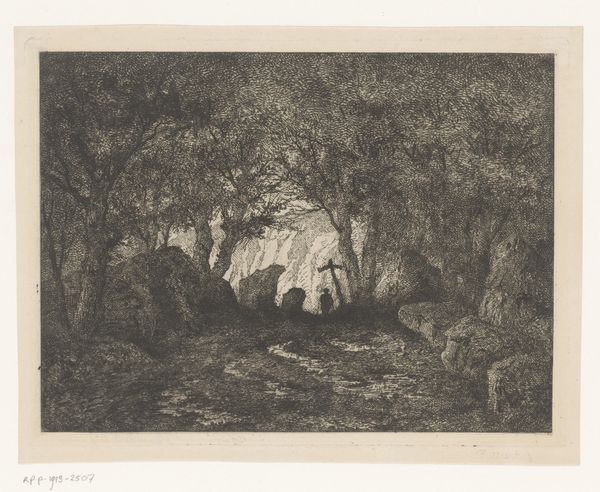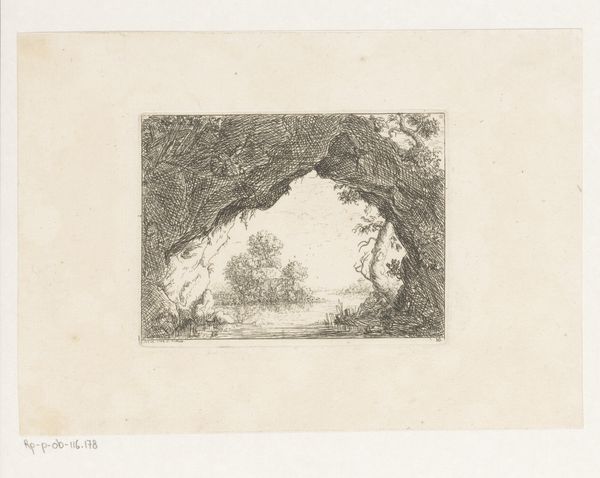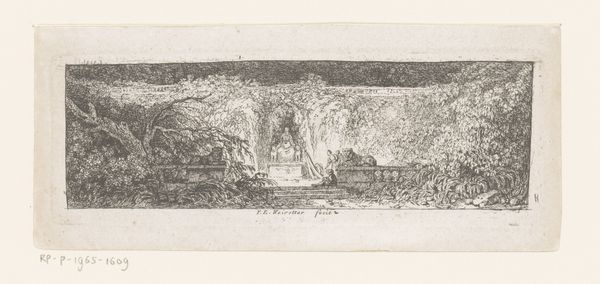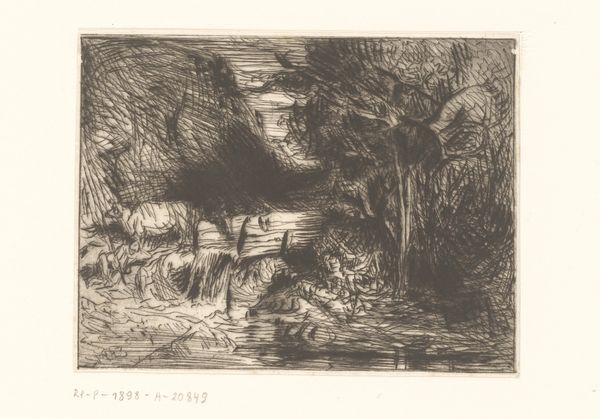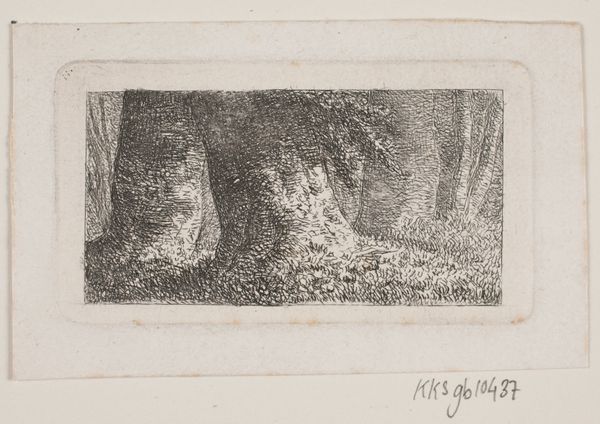
print, etching
#
pencil drawn
# print
#
etching
#
landscape
#
form
#
pencil drawing
#
romanticism
#
line
Dimensions: plate: 28.8 x 36.8 cm (11 5/16 x 14 1/2 in.) sheet: 44.8 x 62 cm (17 5/8 x 24 7/16 in.)
Copyright: National Gallery of Art: CC0 1.0
Editor: So, this is Paul Huet’s "A Bridge in Auvergne," made in 1834. It’s an etching, so a print. The rushing water and overgrown vegetation almost swallow the bridge – it feels like nature reclaiming human construction. What do you see in this piece? Curator: I see more than just a picturesque landscape. This piece is situated within the rise of Romanticism, where artists turned to nature as a space of both solace and untamed power, often reflecting anxieties about industrialization and societal change. Consider the political context in 1834: France was still grappling with the aftermath of the Revolution. Does the bridge, a symbol of connection and progress, appear stable, or is it being overwhelmed? Editor: It definitely feels like it’s being overwhelmed. The textures are rough, and the bridge looks like it’s made of the same stone as the landscape around it. It almost disappears. Curator: Exactly. And consider what Huet is saying by choosing this perspective. Is he critiquing the drive for modernization? Perhaps he's using the Auvergne landscape to comment on broader sociopolitical issues. Does the choice of a print – a medium for wider dissemination – strengthen your view of the artist's intent? Editor: That’s a great point; a print would have been much more accessible! It suggests that Huet wanted these ideas to circulate broadly. Maybe it's less a celebration of nature and more a commentary on fragile progress. Curator: Precisely! The work makes us question progress at a moment of profound shifts in society. Examining art in light of gender and class can prompt new perspectives and analyses on its meaning, reflecting intersectional narratives of power, landscape, and societal ambition. Editor: I never would have considered those political angles. Thanks for making me think about more than just the landscape itself! Curator: Absolutely, it's about seeing how art engages with its world. Every artist makes a statement by what they choose to depict, and how.
Comments
No comments
Be the first to comment and join the conversation on the ultimate creative platform.


